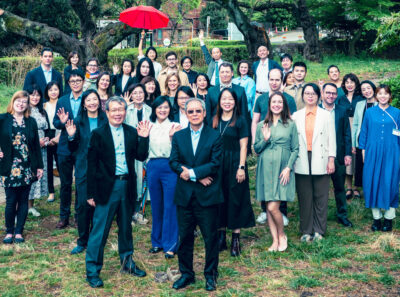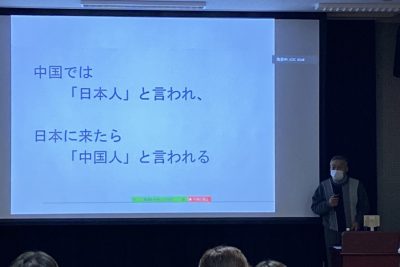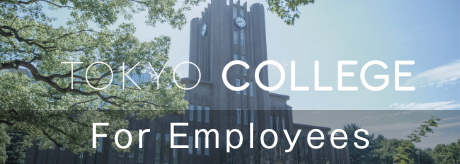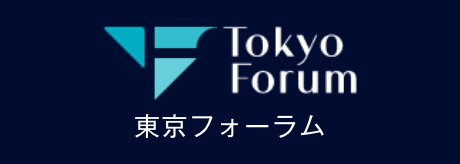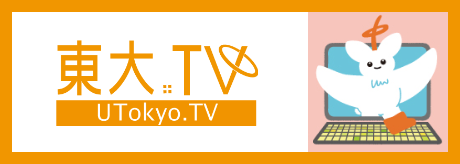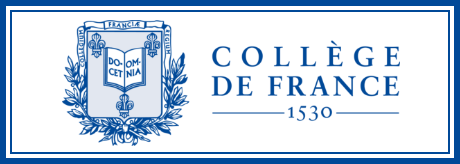Behind the Scenes with UT7 and Tokyo College (Part. 1 of 2)
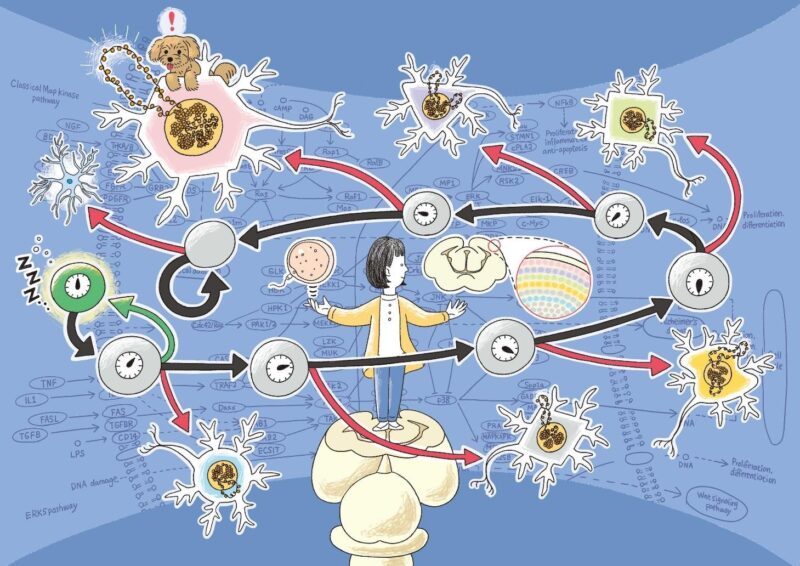
by LI Chunyan, Laur KIIK, Cintia KOZONOI VEZZANI
“UT1,000! That may be our new name one day!” This was the answer that Noji sensei gave us when we asked about the story behind the name UT7—the exciting initiative he began with six other professors from the University of Tokyo. An eighth colleague has already been added to the initiative since its founding, and if Noji sensei’s ambitions are any guide, the number of participating researchers could eventually grow to 1,000! His answer came as we—Chunyan, Cintia, and Laur—were putting on our shoes after having explored his lab at the Hongo campus. Along with many other curiosities about which we asked him, this remark was sadly only captured by our ears as the interview had ended and the camera was already packed up. So now, we thought that we might offer some more of these behind-the-scenes moments from our individual interviews with UT7 professors that we conducted throughout the months of October and November. But before delving into our individual interviews, we sat down with Noji sensei as a group to learn more about UT7, interdisciplinarity, the future of academia, and the research landscape in Japan.
Meeting Prof. Hiroyuki Noji was a wonderful way to learn about this initiative that aims to bring together scholars from different fields to conduct work guided by something that isn’t always a primary motive in academia (especially recently): pure curiosity. As a starting point, Noji sensei gathered professors from engineering, biology, and physics to start a series of dialogues on re-thinking existing concepts, such as “life” and “everyday life.” Our last question to Noji sensei concerned whether any cultural or artistic activities contributed to his thinking. He answered by making a parallel between the pure sciences and the fine arts, expressing the joy of visiting the uncountable and amazing museums spread throughout Tokyo. But as soon as the camera was off, he added that he also enjoys soccer. Not only is he a supporter of the Japanese national team, but he also plays on a soccer team himself! We thought that this comment about his personal life was very welcoming as it showed how physical exercise and the ability to play a team sport shapes his outlook. Teamwork is essential in Noji sensei’s field, from maintaining harmony within his own lab, to developing this new collaborative initiative UT7.
After we had finished asking Noji sensei our questions, he then kindly took us for a tour around his lab. The space surprised us with its bright colors, whiteboards filled with notes and equations, fridges, computers, and last but not least – enthusiastic research students. He stopped to ask one of his graduate research students to share their project with us in simple terms and then added, with joy: “this research is all based on his own curiosity!” From the bright light we moved to a dark room filled with microscopes and shining screens. There, we had a beautiful conversation about the various mechanisms of individual cells. He told us how mitochondria were once a separate organism that was later incorporated into the cell, managing not only to survive, but also to establish a symbiotic relationship. After being asked about his preferred methodology for conducting experiments, he answered by saying that he likes to start from scratch, writing every new step on a blank page. He explained how complex and difficult it is to read the human genome. He compared our DNA to a text insofar as it functions as a living record of a language. The tremendous diversity in our own cells is a reminder of the errors and trials that life had to go through to get to where it is. In this way, life itself is an inspiration for us to seek out the possibility of fulfilling our potential, while letting our curiosity guide us without constraints.
Please read below for more information on each of our interviews, as well as highlights from the videos, and some amazing illustrations by Furuyama san!
Illustrations by Natsumi Furuyama.
Dialogue 1
Speaker NOJI Hiroyuki (Professor, Department of Applied Chemistry, Graduate School of Engineering)
In conversation with LI Chunyan, Laur KIIK, Cintia KOZONOI VEZZANI (Tokyo College, The University of Tokyo)
The interview with Noji sensei was the first of our “UT7” (or UT1000 to become!) dialogue series. We were invited to the Noji lab located in an old-looking school building, with a recently refurbished interior. The lounge is designed as an open workspace with a natural vibe as it includes greeneries and wooden furniture. Perhaps it was the tranquil environment or the gentle smile on Noji sensei’s face, but our anxiety about this very first interview dissipated into the air. We began chatting even before the filming crew had set up the cameras, and even Haneda sensei had to kindly interrupt with a laugh: “Do you guys want to save some of that for the formal interview?”
“Open space for open minds” may be a good way to put the design concept of Noji’s lab. Embracing the uncertainty and unfamiliarity in what one experiences and sees in life and translating such curiosity into research motives is the “enzyme” that drives the research work forward at Noji’s lab. As Furuyama san’s illustration depicts, Noji sensei’s work focuses on dissecting the “mechanism of energy” in cells and how enzymes engineer the synthesis and conversion of energy – something that seems so hardly perceptible but is fundamental to every life on this planet (or even the universe – who knows!). Want to learn more about how Noji sensei sees his field and what he says about his own work? Check out the interview here.
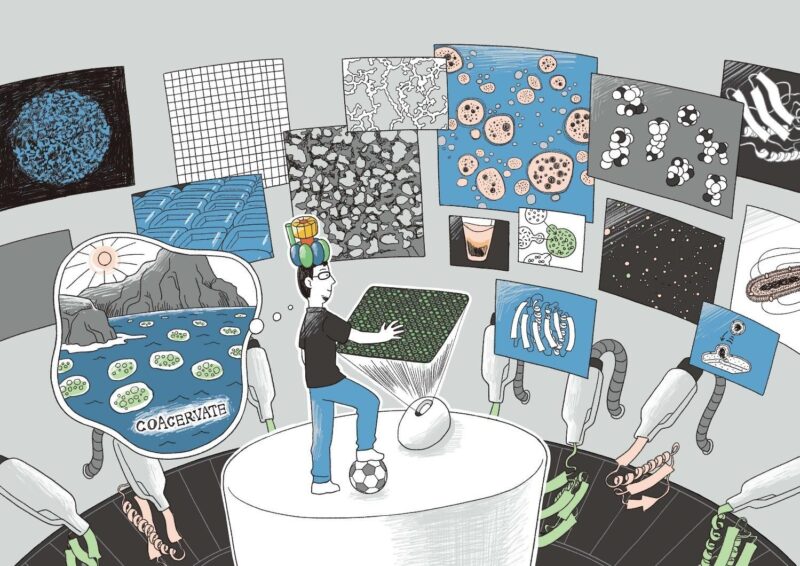
Dialogue 2
Speaker UEDA Hiroki (Professor, Department of Functional Biology, Graduate School of Medicine)
In conversation with Cintia KOZONOI VEZZANI (Tokyo College, The University of Tokyo):
I was very impressed to see Ueda sensei scheduling our Zoom interview for an early Saturday morning (7am UK time)! It showed both his commitment to his work and his generosity in making himself available amidst his busy schedule during his sabbatical at Oxford, in the UK. Schedules and routines are important elements in Ueda sensei’s research, as he investigates the mechanisms undergirding sleep. As we can see in Furuyama san’s illustration, our biological clock is only one of the many layers of the phenomena that Ueda sensei is uncovering—phenomena that lead him to one of the greatest mysteries in life: what is consciousness? Ueda sensei’s work as represented by the illustration shows how one question can function as an open door to exploring multiple mysteries that deserve our attention and analysis. As he says in the video, he likes to emphasize not only what we know, but also what is still unknown and unsolved. To learn more about Ueda sensei’s reflections on sleep and consciousness, check out the interview here.
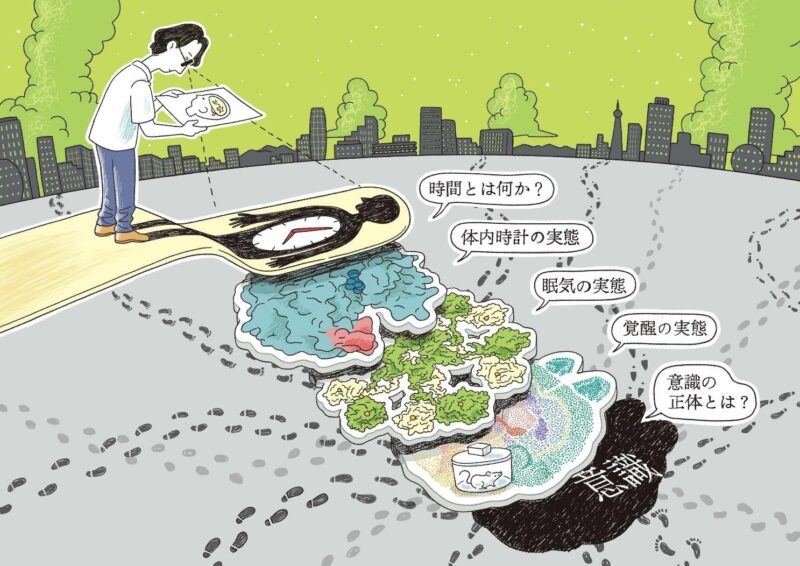
Dialogue 3
Speaker SUGIYAMA Masashi (Professor, Department of Complexity Science and Engineering, Graduate School of Frontier Sciences)
In conversation with Cintia KOZONOI VEZZANI (Tokyo College, The University of Tokyo):
Sugiyama sensei arrived for our meeting at the café filled with energy after biking to campus and enjoying a warm cup of Brazilian coffee. He explained with a laugh that he thought it was better to talk outside than at his lab, where there was not so much to show other than a group of computers on desks. But it is precisely what he is doing with these computers—represented in Furuyama san’s illustration—that made our discussion so interesting. He describes his work as: teaching computers how to learn. This means feeding them with numbers and creating a mathematical toolbox that they can use to solve problems. It’s a reminder of the human component of machine learning and the crucial role of Japan as a center for artificial intelligence research in the world. This work is enhanced by international collaboration and Sugiyama sensei can be seen as a diplomat for machine learning. He had just come back from traveling the world when we spoke and was full of enthusiasm about his new and exciting partnerships! Interested in listening to Sugiyama sensei’s research? Check out his interview here.
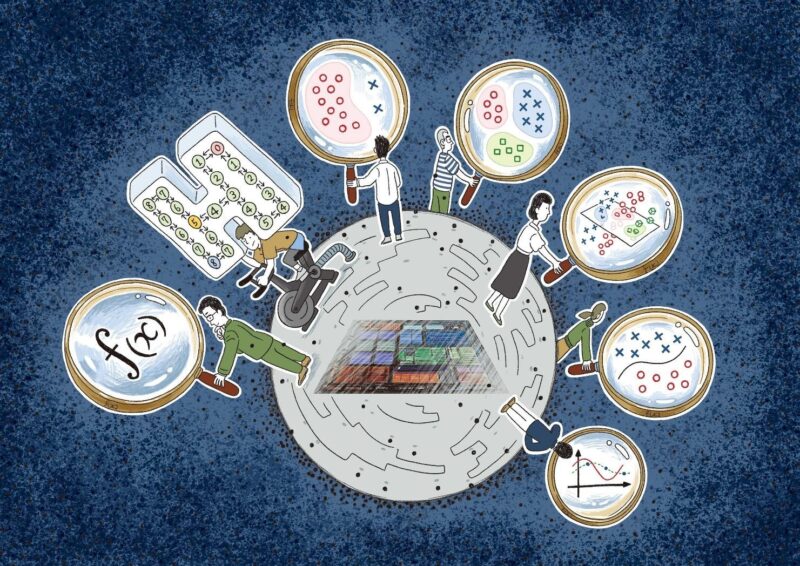
Dialogue 4
Speaker GOTOH Yukiko (Professor, Department of Pharmaceutical Sciences, Graduate School of Pharmaceutical Sciences)
In conversation with Cintia KOZONOI VEZZANI (Tokyo College, The University of Tokyo):
Gotoh sensei’s eyes were shining as she talked about the breakthroughs that her team have been making in the field of cellular communication. We immediately recognized one another as researchers driven by curiosity and a desire to expand the scope of our fields. In her case, this involves discovering how cells transmit information to one another and learn about the world around them. Gotoh sensei’s clear explanations certainly transmitted information to me. As she spoke, I found myself thinking about the trillions of cells in my own body, all sending and receiving signals, making decisions, and reacting to their environment—a vast orchestra of information of which I had never really been aware. Just as the illustration shows, Gotoh sensei can be thought of as a guide to this microscopic world, showing the uncountable interactions that made our own interaction possible! To listen to Gotoh sensei’s description of her research, check out the interview here.

Continues to part 2 of 2.


